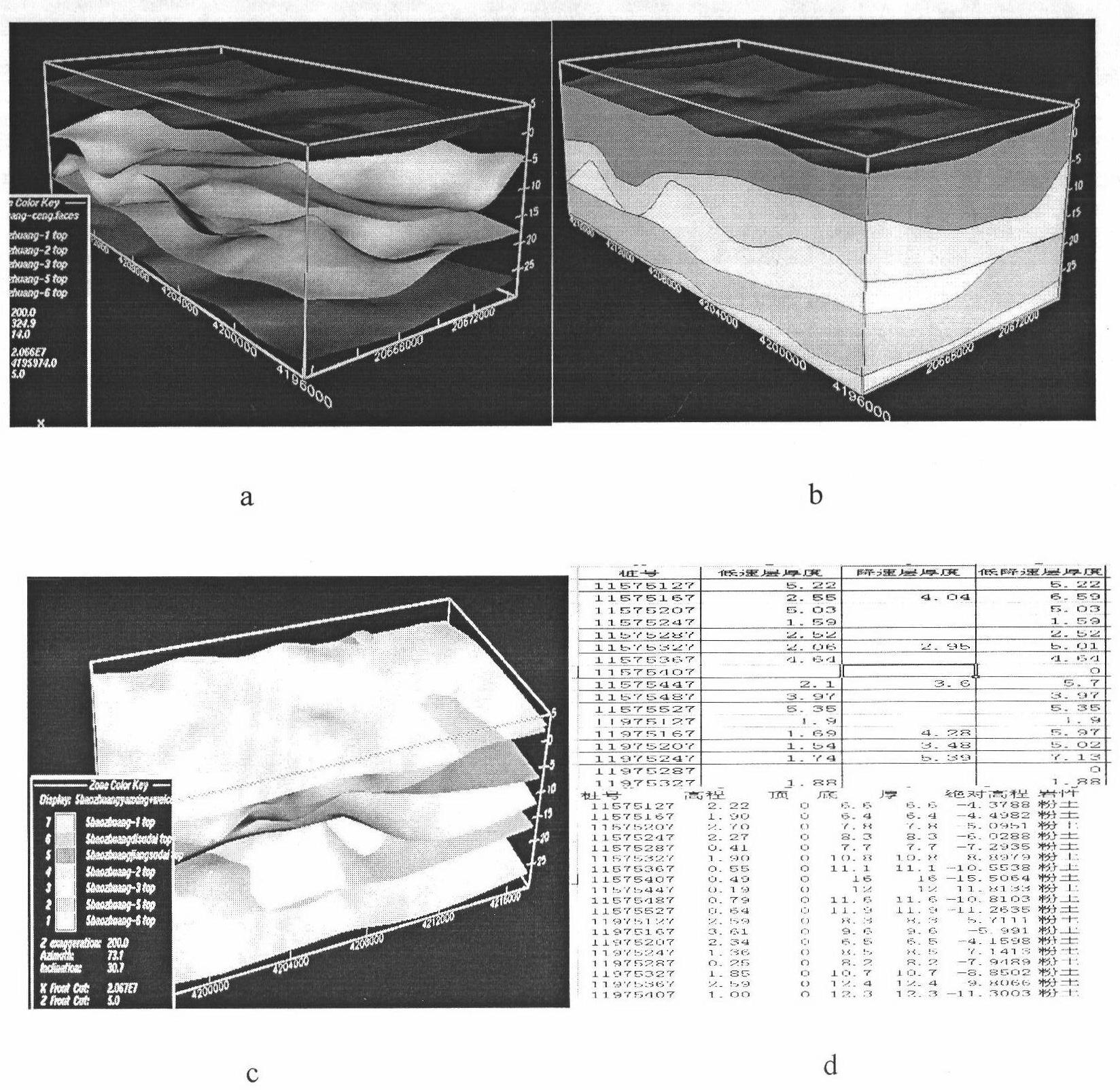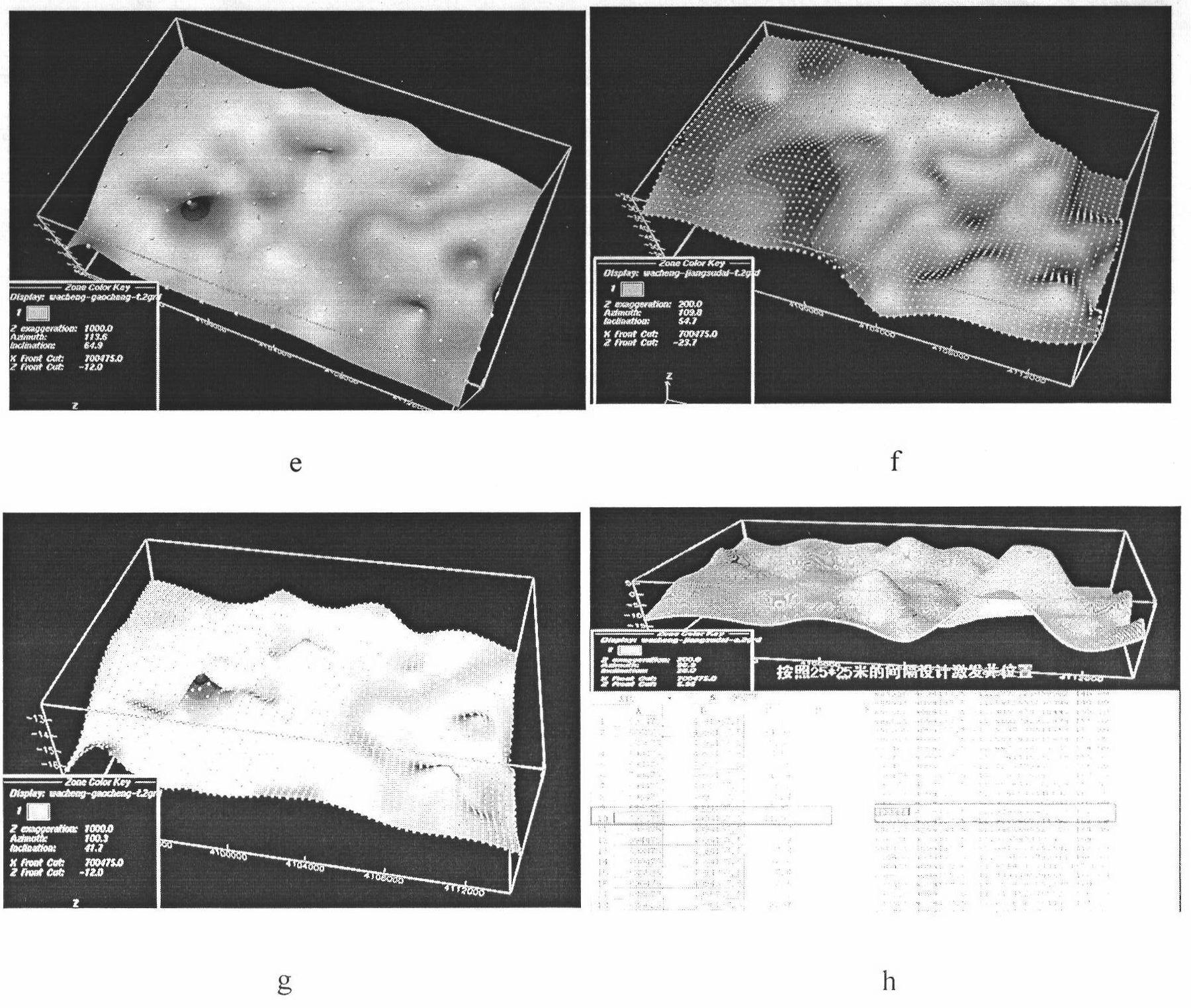Point-by-point excitation well depth designing method based on uniform near-surface model
A technique for stimulating well depth and near the surface, which is applied in the fields of seismology and seismic signal processing for well logging records, and can solve the problem of low signal-to-noise ratio and resolution of seismic data, inaccurate values, and inability to realize point-by-point excitation well depth design To improve the data quality, optimize the design, and improve the recording signal-to-noise ratio
- Summary
- Abstract
- Description
- Claims
- Application Information
AI Technical Summary
Problems solved by technology
Method used
Image
Examples
Embodiment 1
[0037] figure 1 It is a schematic diagram of the processing flow of a preferred embodiment of the point-by-point excitation well depth design method based on the consistent near-surface model provided by the embodiment of the present invention. The flowchart includes the following steps:
[0038] Step 1. Jointly interpret the test data obtained by the three methods of lithology coring, static penetration penetration and micro-logging lithology calibration to obtain the best lithology stratification data; joint interpretation of micro-logging and small refraction test data , to get the optimal velocity layered data. Among them, the purpose of this step is to realize the joint interpretation of the near-surface survey data, obtain the best lithology stratification data and velocity stratification data, and provide basic data for establishing a consistent near-surface model.
[0039] Step 2. Write a data conversion interface program to realize the loading of multi-attribute dat...
Embodiment 2
[0045] According to the method provided in Embodiment 1, this embodiment provides a specific example of point-by-point excitation well depth design based on a multivariate parameter consistent near-surface model established in the Wacheng area of the Shengli exploration area. Such as figure 2 Shown is the schematic diagram of the established fine near-surface model based on small refraction, micro-logging, velocity, and lithology constraints. Figure a is the lithology horizon model established using lithology interpretation data, figure b is the lithology data volume model established using lithology interpretation data, and figure c is the combination of lithology data and micro-logging and small refraction data The comprehensive model established by the interpretation results, Figure d is the comparison chart of lithology data, micro-logging and small refraction data, from figure 2 As can be seen in the figure, the near-surface model established by the joint interpretat...
PUM
 Login to View More
Login to View More Abstract
Description
Claims
Application Information
 Login to View More
Login to View More - R&D
- Intellectual Property
- Life Sciences
- Materials
- Tech Scout
- Unparalleled Data Quality
- Higher Quality Content
- 60% Fewer Hallucinations
Browse by: Latest US Patents, China's latest patents, Technical Efficacy Thesaurus, Application Domain, Technology Topic, Popular Technical Reports.
© 2025 PatSnap. All rights reserved.Legal|Privacy policy|Modern Slavery Act Transparency Statement|Sitemap|About US| Contact US: help@patsnap.com



